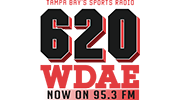Extra Rest Means Extra Offense
Written by Justin Zovas
In our last installment we took a look at how NFL teams responded on a short week so it only seemed logical to jump to the opposite end of the spectrum and analyze the impact an extended period of time between games has ATS and O/U results.
The bye week creates a situation where one would hypothesize that better coaches should excel. Let’s not kid ourselves, playing on teams coming off a bye is has become a trendy thing for bettors. However, historical data disproves this theory. Since 1989, teams coming off a bye are only a 50% proposition (363-341-13). For every team that comes out sharp and re-energized after the bye, another team will come out sluggish and rusty. Each coach handles the bye week differently: some allow for players to take a full vacation away from football while others have their players in meetings studying game film Tuesday morning. Whatever the approach, historical data doesn’t lie. Below is a chart highlighting four current coaches who have flourished off their bye week at a combined mark of 25-3 ATS.
| Coach | Current Team | ATS Record | ATS Margin | SU Record | SU Margin |
| Andy Reid | Eagles | 11-3 | +8.5 | 14-0 | +12.7 |
| Mike McCarthy | Packers | 6-0 | +10.6 | 5-1 | +12.3 |
| John Harbaugh | Ravens | 4-0 | +13.2 | 4-0 | +18 |
| Chan Gailey | Bills | 4-0 | +19 | 3-1 | +20.5 |
Teams coming off a Thursday night contest presents another scenario where the time between games is longer than a week. Albeit only a few extra days, this extended break between games has offered a few interesting trends of its own. Since 1989, teams coming off a Thursday night game are 115-102-3 ATS (a modest 53.0%) the following week. However, the over in these games is 126-89-5 (58.6%).
When the team with extra rest is also at home (no additional travel) the ATS number improves to 59.2 % (58-40-2) and the over improves to 58.8 % (57-40-3). In fact, in the past two seasons this trend has been an impressive 11-3 ATS and over is 10-3-1.
For whatever reason, it appears that teams perform slightly better off 10 days of rest rather than the two weeks that a bye provides. It is possible that 10 days is a more ideal length between games in the sense that it allows players to enjoy an adequate break without becoming too sluggish or rusty. It’s also just as likely that with a smaller sample size in comparison to the bye week data, this modest success ATS is simply just statistical variance.
The higher propensity for overs, however, may be a more statistically relevant trend. Remember, we learned how defenses tend to have an edge over offenses on a short week (less preparation time) so given the extra preparation time, it would make sense that offenses can gain an advantage over their defensive counterparts. The tendency for unders during Thursday night games also subsequently creates deflated totals the following week.
In order to predict the future, you must know the past. In our constant challenge to predict the outcome of NFL games, understanding trends based on specific scenarios is a great first step. However, never rely on just trend analysis to justify your bet at any time during the regular season. Always do your homework and take into account matchups, X’s and O’s, and other situations that present themselves during an arduous regular season.
Three other interesting trends that create food for thought:
Parameters: Team at home on a Sunday or Monday after playing the previous Thursday at home
Record: 21-11-2 ATS
Reasoning: A second straight home game where the team has an extended rest plus has not had to travel the past two weeks
Parameters: Team playing on a Sunday or Monday after playing the previous Thursday in which the game went under the posted total
Record: 75-49-1 O/U
Reasoning: The offense will use the extended preparation time to try to improve plus there will be some line value on the over
Parameters: Team playing on a Sunday or Monday after playing the previous Thursday in which the team was shutout in the 2nd half.
Record: 20-7 O/U
Reasoning: After getting shut out in the second half, the offense will spend the extra preparation time to try to get back on track.













